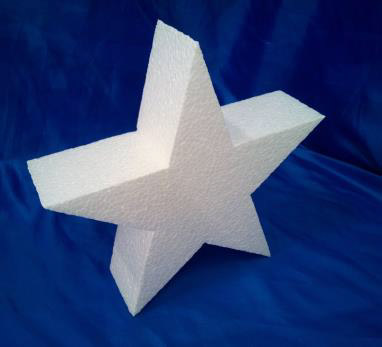PS & EPS
Polystyrene (PS) is a synthetic aromatic polymer made from the monomer styrene. Polystyrene can be solid or foamed. General-purpose polystyrene is clear, hard, and rather brittle. It is an inexpensive resin per unit weight. It is a rather poor barrier to oxygen and water vapor and has a relatively low melting point. Polystyrene is one of the most widely used plastics, the scale of its production being several million tons per year. Polystyrene can be naturally transparent, but can be colored with colorants. Uses include protective packaging (such as packing peanuts and CD and DVD cases), containers (such as "clamshells"), lids, bottles, trays, tumblers, disposable cutlery and in the making of models. As a thermoplastic polymer, polystyrene is in a solid (glassy) state at room temperature but flows if heated above about 100 °C, its glass transition temperature. It becomes rigid again when cooled. This temperature behavior is exploited for extrusion (as in Styrofoam) and also for molding and vacuum forming, since it can be cast into molds with fine detail. Polystyrene is slow to biodegrade and is therefore a focus of controversy among environmentalists. It is increasingly abundant as a form of litter in the outdoor environment, particularly along shores and waterways, especially in its foam form, and also in increasing quantities in the Pacific Ocean.

EPS Expanded polystyrene (EPS) is a rigid and tough, closed-cell foam with a normal density range of 11 to 32 kg/m3 It is usually white and made of pre-expanded polystyrene beads. EPS is used for many applications e.g. trays, plates, bowls and fish boxes. Other uses include molded sheets for building insulation and packing material ("peanuts") for cushioning fragile items inside boxes. Sheets are commonly packaged as rigid panels (size 4 by 8 or 2 by 8 feet in the United States). Due to its technical properties such as low weight, rigidity, and formability, EPS can be used in a wide range of applications. Sales are likely to rise to more than US$15 billion by 2020. Thermal conductivity is measured according to EN 12667. Typical values range from 0.032 to 0.038 W/ (m·K) depending on the density of the EPS board. The value of 0.038 W/ (m·K) was obtained at 15 kg/m3 while the value of 0.032 W/ (m·K) was obtained at 40 kg/m3 according to the data sheet of K-710 from StyroChem Finland. Adding fillers (graphite, aluminum, or carbons) has recently allowed the thermal conductivity of EPS to reach around 0.030–0.034 (as low as 0.029) and as such has a grey/black color which distinguishes it from standard EPS. Several EPS producers have produced a variety of these increased thermal resistance EPS usage for this product in the UK & EU. Water vapor diffusion resistance (μ) of EPS is around 30–70. ICC-ES (International Code Council Evaluation Service) requires EPS boards used in building construction meet ASTM C578 requirements. One of these requirements is that the oxygen index of EPS as measured by ASTM D2863 be greater than 24 volume %. Typical EPS has an oxygen index of around 18 volume %; thus, a flame retardant is added to styrene or polystyrene during the formation of EPS. The boards containing a flame retardant when tested in a tunnel using test method UL 723 or ASTM E84 will have a flame spread index of less than 25 and a smoke-developed index of less than 450. ICC-ES requires the use of a 15-minute thermal barrier when EPS boards are used inside of a building. According to EPS-IA ICF organization, the typical density of EPS used for insulated concrete forms is 1.35 to 1.80 pcf. This is either Type II or Type IX EPS according to ASTM C578. EPS blocks or boards used in building construction are commonly cut using hot wires.


